Rocket Racing League first flights

Bridenstine DKNY Rocket Racer®:
Fabrication to first flight tests
Due to our work with the Rocket Racing League, the web updates here at Armadillo Aerospace have been a lot more sparse for the last six months than in previous years. At the start, we were under strict secrecy orders, and even after the official announcement of our agreement to provide propulsion systems, RRL wanted to carefully manage the flow of information about the work in progress. Last week, Granger Whitelaw, the CEO of Rocket Racing League, finally gave me the go-ahead to release our media. Thanks to Matt for putting everything together.
Working with RRL has been a very good partnership. I was hesitant about the project at first, because we aren't "airplane guys" here at AA, but I did think that the direction we were moving with the film cooled engines was a good fit for a high operability manned rocket vehicle, and eventually I was convinced that we should go for it.
The RRL technical people have been good to work with, spending a lot of time on site at our shop helping to hash out all the vehicle integration issues. We are learning a lot about aircraft, and they are learning a lot about rockets. Working with Len Fox, the test pilot for the program, has brought additional rigor to our testing and operational procedures.
The development process certainly wasn't flawless -- we had to work through several problems of various degrees of excitement, but all things considered, it went fast and smooth. It was six months from concept to first flight, and less than three months from the time the airframe arrived at our shop, with several delays due to permits and weather that were out of our hands. To get the first seven test flights done in just three and a half days still feels pretty remarkable.
The decision to do the initial test flights at the Oklahoma Spaceport were driven by the extra options that the enormous 12000' runway gives the test pilot in the case of incidents. Bill Khourie and the other OSIDA folks have always been extremely supportive of our efforts, and I'm sure it was rewarding for them to finally see a rocketplane flying from their runway.
We have several technical improvements still to make based on our experience with the vehicle, but we are going into production soon, and there will be a fleet of these flying around next year.
John Carmack
Press Release
Video
Photos
Team Commentary
Press Release
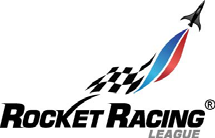
ROCKET RACING LEAGUE® COMPLETES SUCCESSFUL FLIGHT TEST
CAMPAIGN AT OKLAHOMA SPACEPORT
Rocket Racer Flies Record Seven Times in Four Days
New York, NY—September 4, 2008—The Rocket Racing League today announced the
successful results of the first seven test flights of the Bridenstine DKNY Rocket Racer®
conducted at the Oklahoma Spaceport (OKSP), a leading facility specializing in horizontal takeoff
and landing of Reusable Launch Vehicles, in Burns Flat, Oklahoma.
The Bridenstine DKNY Rocket Racer vehicle, now equipped with liquid oxygen (LOX)-alcohol
engines manufactured by Armadillo Aerospace, a leading developer of reusable rocket powered
vehicles based in Mesquite, Texas, underwent an aggressive flight test campaign designed to
validate static and dynamic airframe and engine stability throughout its entire operating
envelope.
“The successful conclusion of this flight test campaign marks two important milestones for the
League, allowing us to proceed on our planned schedule of exhibition race events throughout the
remainder of 2008 and 2009 and also validating our rapid prototyping capability in bringing new
and innovative rocket powered vehicles from concept to flight inside of a six month development
period,” said Granger Whitelaw, Rocket Racing League Co-Founder and Chief Executive
Officer.
“We are thrilled to have been selected as the facility of choice by the Rocket Racing League for
its initial flight test program,” said Bill Khourie, Executive Director of the Oklahoma Space
Industry Development Authority (OSIDA). “The Oklahoma Spaceport provided the League with
a qualified facility including a runway of almost three miles in length, hangar facilities, safety
officials, air traffic control, and other support staff and housing. It was a major milestone in our
evolution as we played an instrumental role in the incredibly successful flights of the Rocket
Racer to altitudes in excess of 12,000 feet.”
“The Oklahoma Spaceport and its staff have proven to be a highly valuable asset to the Rocket
Racing League,” said Michael D’Angelo, Rocket Racing League Chief Technology Officer.
“We’ve made great progress in rapidly moving from static engine tests, to powered taxis, and
now, through collaboration with OKSP, we’ve successfully completed our R&D up-and-away
flights of the Bridenstine DKNY Rocket Racer.”
Videos and photographs of the Rocket Racer test flights are available for download and viewing
at the following FTP site:
Domain: rocketracingleague.ipower.com
Username: press_ftp
Password: pressmaterials
NOTE: You will need an FTP Client Program to access site
For more information or to find a schedule of future Rocket Racing League events, visit
www.RocketRacingLeague.com.
About The Rocket Racing League®
Founded in 2005 by two-time Indianapolis 500 winning team partner Granger Whitelaw and X
PRIZE Chairman and CEO Peter H. Diamandis, MD, the Rocket Racing League® (RRL™) is a
new entertainment sports league that combines the exhilaration of racing with the power of
rocket engines. To be held at venues across the country, the Rocket Racing League will feature
multiple races pitting up to 10 Rocket Racers going head to head in a 4-lap, multiple elimination
heat format on a 5-mile “Formula One”-like closed circuit raceway in the sky. For more
information on the Rocket Racing League, please visit www.rocketracingleague.com.
About The Oklahoma Spaceport
Specializing in air-launch / horizontal landing and horizontal take-off and landing of Reusable
Launch Vehicles (RLVs) this launch site became the first U.S. inland spaceport with an
established flight corridor for space operations in the national airspace system clear of military
operating areas or restricted airspace. This arrangement means that space vehicles will not need
military permission to operate because the spaceport will have its own airspace making the
Oklahoma Spaceport ideal for the development of rocket powered vehicles.
Media Contact
John McCartney
Attention! for Rocket Racing League
(212) 201-7893
john_mccartney@attentionusa.com
Video
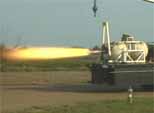
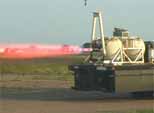
Stainless, film-cooled engine tests, with and without plume seeding (WMV, 6 & 8MB)

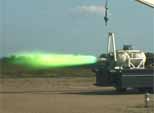
Stainless, film-cooled engine tests, both red and green plume seeding and restarts (WMV, 4 & 2MB)
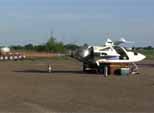
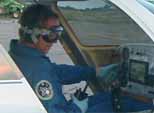

Testing the propulsion system in the airframe, remotely fired and cockpit fired (WMV, 22, 19, & 14MB)
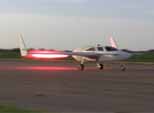
Rocket Racer® taxi tests (WMV, 18MB)
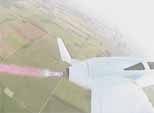
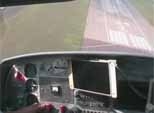
First flight, Oklahoma Spaceport, August 25, 2008, takeoff (wing camera has no audio) and landing (MPEG1, 9MB; and WMV, 4MB)
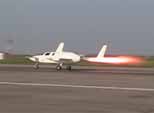
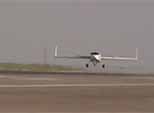
Second flight, Oklahoma Spaceport, August 26, 2008, takeoff and landing (WMV, 7 & 4MB). The Rocket Racing League has already released a video of the third flight (date in the title card should say 2008, of course).
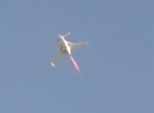
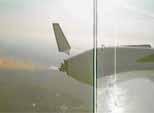
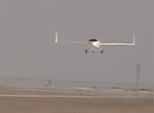
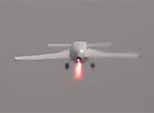
Fourth and fifth flights, Oklahoma Spaceport, August 27, 2008, takeoffs, relight, and landings (WMV, 4, 7, 17, & 19MB)

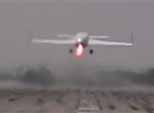
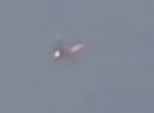
Sixth and seventh flights, Oklahoma Spaceport, August 28, 2008, takeoffs and relight (WMV, 2, 4, & 5MB)
Photos
The stripped-down Velocity XL FG arrives and modification begins.
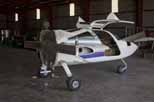
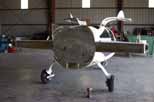
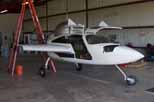
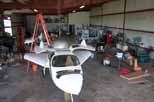
Engine testing continues; plume seeding colors are tested.
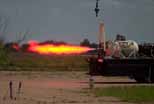
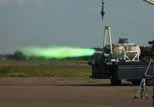
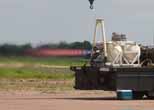
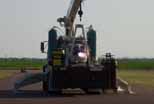
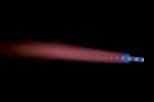
The Bridenstine DKNY Rocket Racer's® propulsion system begins to take shape, joint integration by the Rocket Racing League and Armadillo Aerospace. Airframe modification by the Rocket Racing League.
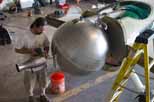
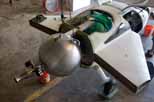
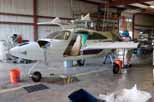
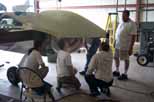
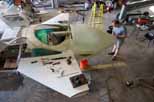
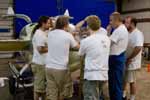
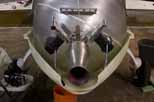
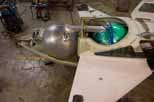
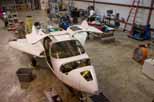
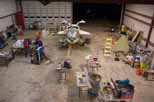
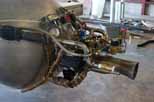
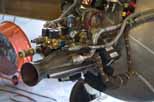
Propulsion system fully integrated, on-board engine testing begins and configuration details get nailed down.
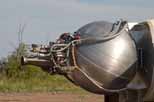
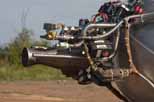

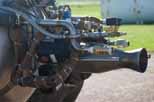
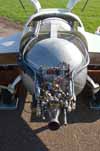

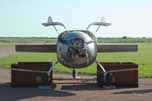

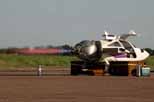
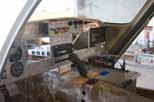
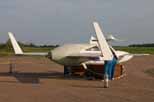
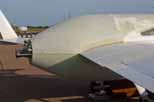
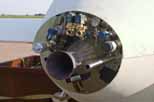
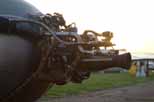
The Racer is now ready for static cockpit firing, and Rocket Racing League test pilot Len Fox gives it a go.

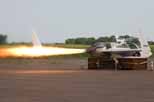
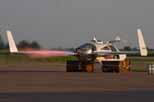
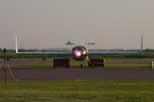
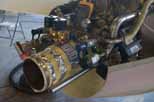
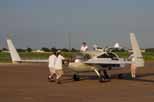


Test pilot Len Fox takes the Racer out for taxi tests.
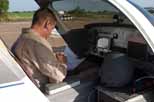
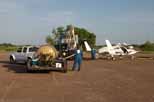
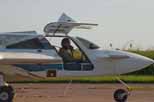
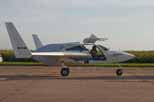

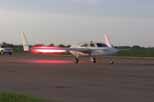
Final configuration takes shape.
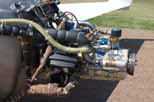
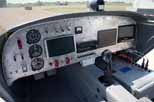
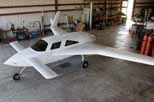
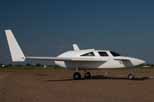
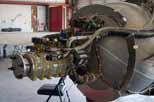
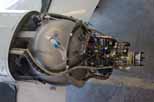
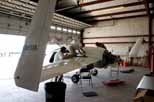
The Racer heads to the Oklahoma Spaceport for first flight tests, but gets thwarted by weather (photos courtesy Russell Blink).
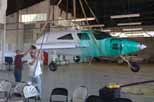
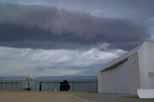
The weather cooperates the week of August 25-29, and Rocket Racing League pilot Len Fox and Armadillo Aerospace ground ops conduct 7 successful test flights (photos courtesy James Bauer).
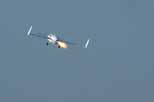
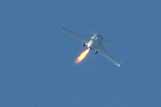
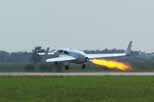
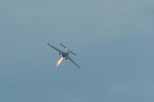
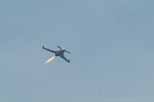
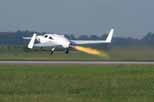
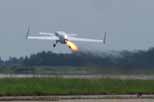
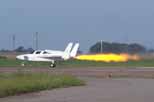
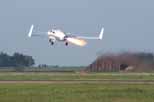
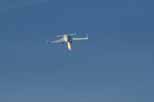
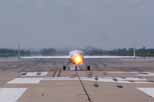
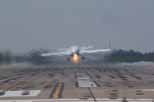
Team Commentary
James Bauer
Tommy Bishop
Russell Blink
Phil Eaton
Joseph LaGrave
James Bauer
I was very proud when it went "wheels up". The months we spent on building, testing and debugging it were tough, but it really is great to see what we built perform the way the RRL vehicle did on its first flights.
I was extremely happy with how the propulsion unit for the RRL vehicle came together. It just worked out so nicely. It has been our best work yet. Working with all the guys at AA, seeing all the ideas of how to modify and improve things, and then actually doing it is a great feeling. I can't wait till we make our eventual sub and orbital attempts.
Our test pilot (Len Fox) is great. My initial impression of him was he must be an adrenaline nut, but after seeing the regime he goes through in preparation for each operation I was quite impressed by his dedication and calculated approach. He was extremely helpful to all of us and our process approach, and I look forward to completing the rest of the test profile with him. He is really fun to watch as he takes the plane through its various paces.
Tommy Bishop
Seeing the high speed taxi was pretty cool all by itself. The nose lifted up quickly and set down so smooth. Kind of caught me off guard it was so fast. It wasn't until the next week, after a few days rain delay, that we got to see the first flight.
I've been fortunate to be a part of this great group of guys for five years now. I've got to see some pretty cool stuff. The crayon rocket, big peroxide rocket, Pixel and the Mod both at the Xcup, are just a few highlights that come to mind. Nothing can really compare to seeing my first powered landing (the crayon) although I think with each new project we come close. OK, I admit it, the first time Pixel was freed from its earthly bonds for a free flight, was a real jaw dropper. I'm sure I had a grin on my face.
The RRL flights were a horse of a different color though. I felt that pride I feel with each Armadillo accomplishment and again the smile came to me and of course a few hoots and hollers. All seven flights were just amazing, never routine.
The experience with Len Fox was second to none. He is the consummate professional. Thank you Len for putting the icing on the cake by taking her into the air.
Thanks also go to the great group of people at OSIDA (Oklahoma Space Industry Development Authority). They made us feel right at home. They provided us everything we needed and then some. They do the state of Oklahoma proud.
Perhaps the best part was the last day when a busload of school kids came to see the plane, ask questions and pose for photographs. The kids are
our future and we have to get them interested young to keep this endeavor alive. I cant wait to see the pictures.
I can hardly wait for the rest of the Armadillo team to witness their first flight. I'm hoping that comes real soon.
Russell Blink
Reflections from launch control at the first flights of the RRL N205MB Velocity XL powered by Armadillo Aerospace.
Well this could really be broken down into two sessions, the first is simply the saga of trying to get the plane to Clinton Sherman Airport, assembled and tested prior to first flight. The second is the second trip up to Oklahoma and finally getting the bird into the air.
Our first trip involved getting the plane up to Oklahoma. Not a bad trip and it was pretty uneventful getting it there. I did have to make a quick stop in Oklahoma City to purchase a new phone (only Apple stores had iPhones) and then racing like hell to catch back up with the airplane before it reached the hanger. I missed catching up by just a couple minutes, not bad since I had to spend an hour or so waiting for the phone.
We assembled the plane and proceeded to finish up all the little things that needed to be done before flying. The nose wheel needed a bushing replaced (not fun), the cowling needed nut plates added for which we didn’t have the correct rivet size so I proceeded to drill all the heat treated monsters by hand, sharpening the drill every three or so plates. There were a lot of details to handle and we forgot to bring a couple of the access port covers for the wing and it just so happened that there was some spare (well sort of spare) sheet metal in the hanger and we used that. It was only a little.
After everything was ready we needed to run a low speed taxi again and that went without a hitch. This was my first time running the launch control show (ALC) and along with that we had to communicate with ground and tower controllers. Now, not being a pilot I didn’t have any experience with this and during our comprehensive briefing I made darn sure to copy down what I was supposed to say, repeating it silently to myself to get it right, I wasn’t going to sound like a newbie talking to the pros. Len’s briefings are probably typical of the military which he comes from, but for us they were a bit new and I really liked the information he provides; it covers all aspects of what we are about to do and sets the stage for what to expect at any moment. Since we had multiple vehicles to move around besides the airplane, this was really necessary, especially because of the fact the airport has traffic (the air kind), mostly the military practicing approaches, landings and takeoffs, so we had to get in and out like we were going to Wisconsin (old Stripes line). This test was run on the alternate runway which is actually the old run-up area for the B52’s and their taxiway to the end of the real runway. Most planes could take off going across it; it’s really big and a mile trip down to the end of it pulling the plane at a whopping 10mph. All said it worked perfectly like always :) and now we were ready for a high speed taxi test.
The high speed test required a briefing as if we were going to fly. If the plane popped up when the nose came off the ground Len had the option of continuing on and just flying the first test flight. This had to take place on the big runway and so now communications with the tower were even more complex. The target for the test was to, under power, pick the nose up. This verifies that the plane will get off the ground under power at the desired speed and that the thrust line of the engine is good (our default best guess as it was). Again everything went perfectly and we cheered as the nose came up, granted the whole thing took 5-6 seconds. On to first flight.
Weather in Oklahoma was not cooperative so we waited and we waited, took to the hold short and waited. Finally we gave up. Some people had come around to ostensibly visit and wish us well, but maybe scoop what was going on and we noticed them as we drove by on our way home. We packed up the important gear we needed back home to continue tests there (for NASA) and left everything else, including our big crane truck. It looked like we could make it back after a week break which gave everyone some needed time off, especially Len; he hadn’t been home in quite a while.
Ok, back again a week later. I was feeling like I may be pushing things a bit with my day work so during the time off I got everything done I possibly could and left the next week pretty clear, so back to Oklahoma again.
Watching the weather on the way it looked like it may just let up (cloud cover that is) in the evening and sure enough when we got up there, Len was ready and we basically said, hey it looks like it will be clear enough, let’s fly. He agreed and we set up to brief and be ready as soon as possible. Now we had the added complication of wanting to get the tow truck down the runway to be somewhat better positioned for visual cues and photography. Len was planning a number of callouts for various performance points of the aircraft and I had revised the checklist a bit so that some of the initial parameters could be clicked off on the computer. Unfortunately the checklist requires that telemetry is working between the PC and the flight computer, which at the distance we pulled away it just barely made it and those check points were not as accurate as I wanted.
A little discussion of what was going on as ALC may be of help here. For each sortie, after the briefing we would all scramble around getting our respective items set and mine entailed the following: getting the laptop setup in the tow truck, checking the plume seeding (not really my task, but I had done it more than anyone so…) setting up the directories on the laptop for the upcoming run and checking my notes on what to calls to make to the ground and tower controllers. At each debriefing I would update the checklist if we had any input to it and each time it got better and easier. The first item is always comm checks to the crew and then one big continuation which is to establish the connection to the flight computer and get the flight control program running. Because we have finite run time on our batteries, I sometimes held off calling the pilot to turn the computer on and sometimes I did it right away, it was a judgment call based upon how far the taxi was going to be and what speed we were going to go at. Thankfully we had upped our speed to at least 15mph so it wasn’t going to take as long. After I got all the communication taken care of and the computer was up in the airplane I had to call ground to get permission to taxi. ALC always had the lead going to the hold short and after operations going back to the hangar, so it was up to me and I was getting a bit more comfortable doing this. By the seventh flight it was routine and I even got the controller to mess up once and I felt like I was someone, this was after screwing up pretty good once so we were even, ha. Ok, back to it, called ground and we were off. Each sortie was like this so back to flight number one.
At the hold short for the main runway, we stopped our caravan (tow, plane, fuel truck and volunteer fire crew) and really started things happening. My second check list item is basically to tell the fuel man to verify he’s ready and I would always pause waiting for the truck to at least stop moving before I assumed he, the driver (James) was at least near the control board to report back. Ok, that done it’s on to real operations, check all the computer functions and the actuators. First I work with pad1, Phil, to verify the computer-controlled functions then with Len, the pilot, because some are controlled by him and not the computer. Everything checks out so on we go, fuel first. I can watch the tank pressures to see the fuel is going in, but we always have the pad crew report that it’s flowing in. I can also see when it’s done because the tank pressure shoots up a bit and I still wait for the pad crew to report it’s done because they must stow the line and get the valves in the correct positions that the checklist had previously required them to be on standby to set. During the brief time it takes to fuel the bird we bleed the igniter line with the pressure that is present from the ongoing fuel transfer.
Fuel done, time for LOX. LOX takes around 8 minutes and there is plenty of time to check the weather from the automated service. Hmm forgot to mention the mission rules were set to 7kts wind and we were bouncing around 6-8 or so. Just a little panic because we had been here before and had to scrub, but not today, it held out for us. LOX complete, again a pressure rise that I can see along with the pad crew callout. Time for pressure. Always the most critical point, if something is going to go wrong I would bet it would be now. Still we are very well practiced and everything goes smooth as silk, I call out the pressures as they rise, I check the wind for my own edification and when we hit our desired pressure we hold for the helium to chill down and minimize the pressure drop from the cooling process. During this period everyone clears the area because if something let go it would be big, wait a minute, I can see the plane and what about myself and Tommy next to me (driving tow); I guess the pickup is enough of a shield, but still.
Nerves haven’t had a chance to do anything yet, but now it’s pretty quiet and I start thinking about what may go wrong and god forbid we lose the plane and Len. Not much time to think before I have to call him to confirm his checklist is complete and request clearance from the Tower. I switch from ground to tower frequency and wait for the interrogation/response. Holy *&#! there it is, we’re really going to go for it. Ok Tommy, pulls to the line and we move out. We get on the monster runway and Phil disconnects the plane, we quickly circle around and get to the side of the plane. We have a set procedure whereby we bleed off some LOX through a dump valve controlled by the pilot and then a two second burn to verify the engine starts, stops and no aborts are detected. Ok we did the dump, now the burn, Len calls the tower and tells them he’s going to do a two second burn and they don’t understand and keep clearing him to fly, he just goes on. We have a two step arming procedure, I tell him to switch on his cockpit arming switch at which time I confirm it on my laptop, then I have an arming keystroke that I perform to fully arm the vehicle; this keeps either side from accidentally firing the engine (in case someone is behind it or your not on nice long runway). Both done and this is the moment of truth.
We’re actually really close to the vehicle and the burn is damn loud, I quickly look at the telemetry, all good, at least from what I can see in a second or so and I say go, at the same time I remember I need to call the Tower and ask permission to drive down the runway so I quickly call them and bungle my way through this callout, but it’s ok and we whistle away (it is a turbo diesel pickup truck) along the way I call to Len to rearm his cockpit switch and I arm my control so if I lose telemetry when we get to the hold short on the next taxiway off of the runway he is ready to go on his own. We get to the taxiway and loop around past the hold short, I call Len and tell him cleared to fire, at the same time I’m getting out of the truck, watching to see him so I can try and mark his start, liftoff, 500’ then 1500’ times. He calls the tower and notifies them of the pending flight, then on our radio – ‘3 ‘2 ‘1 I see the flame and hit the checklist hack, damn that was quick all wheels in the air –hack, quickly over the radio comes five hundred one twenty (500’ altitude 165kts) –hack, then in the same span, fifteen hundred –hack. Later I check and because I lost telemetry the checkmarks are off, but spaced somewhat correctly, also the thing is so loud that when he goes by and he’s already at 500’, I can hardly hear him call out data for the roar.
It turns out it took about 7.3 seconds to liftoff and around 8 to 500 then another 8 to 1500. He has a spiral climb planned until burnout or he hits his imposed ceiling and the burnout comes first, somewhere around 74 seconds and he just pops up around 10kft. FAST! This thing climbs away like an airplane should, at least if you like racing planes. The rest of the flight is spent testing stall and glide speeds, checking control surface functions and such then properly lining up for the landing. At altitude I call to Len to dump LOX and he does (which looks really neat in the sky) then Fuel (which is a bit less dramatic than LOX), he finally turns on the helium purge so the propulsion system is totally benign for landing. Len has practiced the landing using a Velocity SE (I got to ride on two of these tests) and pretty much knows exactly how it should go and sure enough the glide slope is close to predicted and stall is exactly where he thought so I don’t even sweat the landing. In fact after the two second burn I felt giddy, but self assured, it was going to be fine, I just knew it, that engine is darn reliable and since we installed it nothing has even required tightening, it’s perfect.
Oh by the way, we used salt water for the plume seed and it was awesome, bright yellow, steady and visible all the way up; I can’t wait to see red and green in the air. Back to the flight, Len lands spot-on, the gear vibrates a bit, but I noticed his wings were perfectly level and in fact they were on takeoff too, this guy is steady as a rock, maybe it’s the calm air, but he sure makes it look good. Roll out goes just short of the hold short line and I pull him over so we’re all clear of the active. First flight in the books and performance was perfect (at least the engine).
On the remaining flights, seven total, we discover things about the plane and its handling qualities, what pressures to run the propellant tanks at and a bit more refinement on the checklist and procedures. We learned things about propellant slosh in flight, shaking the tanks during the pressurization cycle to cool the helium more and so on, some callouts in the checklist are just too wordy and we decided that we would always do a post flight de-tank even though we know all residuals were dumped out in flight because someday this is going to be turned over to a team and the flight may not end with empty tanks and we wanted to practice procedures they may need to use. So I made two post flight procedures, one if there was pressure still in the tanks and one if they were fully vented. The first we already had because of all the preliminary tests on the crane truck and non-flight tests of the full-up airplane. Len even did a barrel roll (half un-powered just in case the engine pushed too hard), climbed at up to 65degrees and just kept awing me with his rock steady skill. Ok, the engine was really cool too, but I get to see those all the time. Isn’t life grand, to be able to design, build, and operate then just simply watch such a powerful piece of machinery perform exactly as expected. There are certainly a number of inherent risks doing this, but its rewards are well worth it.
For a finale, OSIDA (Oklahoma Space Industry Development Authority) brought over a bunch of students and they toured the plane and got all kinds of stories told and questions answered by us, Armadillo, and Len Fox the pilot. After all he is a fighter jock, who wouldn’t want to talk with him?
Well that’s a bit of what I did and saw. There are a number of little points I missed and I didn’t even go into the great adventures of finding food in the Burns Flat area, (Willy’s is great, just not open enough) or the discussions of the visitors we had, but didn’t want at the time, or the great stories we got Len to tell about how he got his call sign and start in the Navy and on and on.
I didn’t really go over who was involved with this so let me clarify, Len Fox is the pilot, a professional test pilot with a pedigree worth reading about so I won’t go into it here; suffice it to say he really knows his stuff, in the air and on the ground. Phil Eaton was acting as PAD1 (pad crew in charge of working directly with the vehicle when doing propellant operations), one of my best friends and no one I could trust more to work with during the hazards of operating rockets. Tommy Bishop who was acting as my second, learning the ALC functions, driving the tow truck and going back and forth from me to the rest of the crew when needs arose, plus making sure we took everything we needed to Oklahoma in the first place, meticulous and a first-rate guy all around. James Bauer, driving the crane/fuel truck, operating the fueling control panel and helping keep the consumables ready for operations, an excellent craftsman and responsible for more of the fabrication on the propulsion system than anyone else. I myself, Russ Blink, taking the ALC duties which John Carmack our leader normally handles, interested in rockets since my dad worked on Apollo and simply glad to have gotten together with Phil and John to start Armadillo. We proved that a minimal crew can operate this complex system safely, expeditiously and repeatedly at a tempo unmatched by anyone else I know of. It was a true pleasure working with them and I will jump at the chance to do it again when the plane returns from Reno, ready to expand its envelope and get ready for public performances in the near future.
Phil Eaton
Here are a few personal notes from a whirlwind of 7 flights of the Bridenstine DKNY Rocket Racer® powered by Armadillo's engine in 3 1/2 days...
When we first packed the truck to make as many test flights of the new Armadillo propelled Rocket Racer® as possible in one trip to Burns Flat, Oklahoma, we thought it highly unlikely that we would be able to burn through 8 full loads of propellant without spending weeks on location. We could have loaded more, but the absurdity of it all won out. 8 loads was convenient, and therefore anything more was just not practical... Unless of course everything goes right!
When we first arrived on site in mid August, Murphy was present. One of the actuator housings for a main valve was cracked and needed to be replaced. A quick call to John, and he was able to pack a couple of spare actuators in a box and get it to the Fed Ex office with one minute to spare! Burns Flat being in the middle of the state of Oklahoma away from a major airport meant that early morning delivery ended up being 4:00 in the afternoon.
We got the new part installed and conducted the low speed and high speed taxi tests to establish a few basic data points before lifting off for the first time. Now we were ready to conduct the first flight. All we needed were specifically low winds and a high ceiling of clouds. Neither of which would present themselves with the other over the following several days, leading to a decision to scrub the test series and return to base in Caddo Mills and finish some pressing work on the LOX/Methane engine for NASA. This meant we would not return for another 10 days.
After a concentrated effort on the NASA project, we were able to finally nail down the correct design and procedure to make the engine run as desired on LOX/LCH4. During that week, it rained nearly every day in the Caddo area, as well as in Oklahoma, and the forecast looked bleak for the following week we had committed to return.
In spite of the forecasted storms and wind late Saturday night, we decided to go anyway in hopes we could get a break in the weather and get off a flight or two. Monday afternoon as we approached Burns Flat, The clouds parted to leave nothing but a few puffs of white on the canvas of blue sky with hardly a breath of wind to make it seem real! Without even taking time to unpack, we prepped the aircraft and conducted the briefing. We towed to the south end of the field just waiting for the wind to pick up and scrub the flight... but it never came.
The first time excitement gripping us all was unleashed in whoops of joy from the 3 of us near the camera as the aircraft thundered into the air on a fiery yellow plume. What a thrill it is to see the months of early mornings and late nights streaking across the sky in front of you! No more a dream, but a real piece of rocket-powered eye candy roaring off the drawing board straight into its rightful place.
The nerves settle as the plane finds the ground exactly as planned and we return for the debrief and preparation for the following day.
Tuesday dawned early as we wanted to be on and off the field before the military trainers started cluttering the airspace. At any moment we had seen as many as 4 jets flying the pattern around the airport while we were working in the hangar. Our previous week had also told us that winds can change from calm to 15 knots in only a few short minutes between 7:00AM and 8:00AM.
Everything went as planned in the briefing and the preflight, and winds remained within limits as we took the runway for the 2nd time with only a good night's rest between flights. Nerves are not so high, but still hoping the first flight was not just a tease, and everything will continue as planned. This time we take off from the north end of the field.
Everything is in place and ready to go. Once again, the aircraft leaps into the air in just under 7 seconds and maintains a steady climb to altitude. We can hear Len calling out planned flight test results and Russ jots them down for review in the post flight debriefing. The air seemed perfect, and the aircraft attains an altitude of over 10,000 feet as the engine senses the end of its propellant load. the plane flies graceful circles about the airfield, and 12 minutes later is lining up for final approach just as planned. the landing was perfect, and Len was able to coast to a stop just past the hold short line on the first taxiway as if he had performed the same maneuver dozens of times before!
In an effort to reduce what a rocket guy considers sweet music and keep from boring the world with the same data over and over, I will cut this down a bit...
As we appear to be plagued with nothing more or less than perfection from weather, hardware and flight data; every opportunity we chose to make a flight, we made a flight. Every component on the propulsion system worked without a hitch and Len was able to collect all of the FAA required data in the 7 flights made in 3 days plus one evening! The aircraft performed for the most part as expected, and we will be able to continue the flight test program on a much shorter runway in the very near future. We were able to contain every single flight to an area of less than 3,000 feet of the 15,000 feet available at Burns Flat.
When we had completed the 7th flight, we realized that for the first time in a long time, Murphy appeared to be on vacation. We were at a point in the operations that we could have easily run 3 if not 4 operations in a single day at the rate we were turning the briefings and the aircraft preflight.
Some things of note from the 7 flights:
Nothing was tweaked, tightened or altered in any way on the propulsion module.
The issues from higher altitude restarts from XP-Cup 2007 had indeed been fixed and this time verified at 8,000 feet during a couple of in-air relights.
It is REALLY hard to keep a camera zoomed all the way in and on target during flight. When the flame goes out, and the bright yellow plume is gone, it is impossible with the autofocus going crazy! (Of course Matt would be able to do it, but he is a Genius with a video camera!)
It is possible to gain 10 lbs eating doughnuts for breakfast, having Willy's special for lunch, and hitting the local convenience store for whatever you can find at night... (Len makes a mean vanilla shake!) The last night we also discovered that Braums in Elk city was a nice uptown change. :)
During the week we were between Rocket Racer® ops in Oklahoma, I also discovered it is possible to pick up and move one's house in 24 hours... Of course, it helps when one's wife is as capable as my wife Robin is, and of course borrowing a couple of young would-be boyfriends of my daughter went a long way as well! (I have now shortened my commute from 100 miles a day to 6 miles round trip. What a difference!)
We would never want to assume that things would ever go this easy again, but we certainly hope so! We have resumed work on our VTVL ops in preparation for the Lunar Lander Challenge again for this year. It is amazing how much there is to do on a vehicle when you haven't worked with it in nearly 6 months. Still in anticipation of changing gears to the VTVL project, I have not yet seen a failure hit the Armadillo team that was permanent. We will make this work too!
Joseph LaGrave
I fell in love with aviation at the age of six. My first rocket was powered by match heads in an aluminum foil chamber and launched from toothpicks at the age of nine or ten. My favorite fireworks were always the bottle rockets. Naturally the two loves would meet as my brothers and I would jam bottle rockets into the back of model airplanes. A portent of the future manifesting at the age of 12.
The airframe arrived at the new Armadillo hangar on May 30 and we began static testing about 2 weeks later. Taxi tests began just 35 days after the arrival of the airframe and the FAA was scheduled for their inspection but postponed it until after the Oshkosh airshow. When you factor out the delays from weather and postponed inspections we had a flyable aircraft and power plant ready in less than 60 days. It would follow Armadillo form to have a new flying platform this year and to build it in a very short amount of time with the majority of the team still working only two to three days a week.
I wasn't able to make it to Oklahoma for the testing but as is evidenced by the precision with which the testing was carried out, the support crew available accomplished it flawlessly. To my teammates that completed the flight operations portion of this project, a deserved standing ovation.
Prior to Len Fox strapping this Rocket Racer® on I had the good fortune of driving the rocket powered crane truck and the opportunity to fire the motor from the Rocket Racer® cockpit during a static test. This is one powerful machine. I can't wait to see it perform in front of a crowd.
|